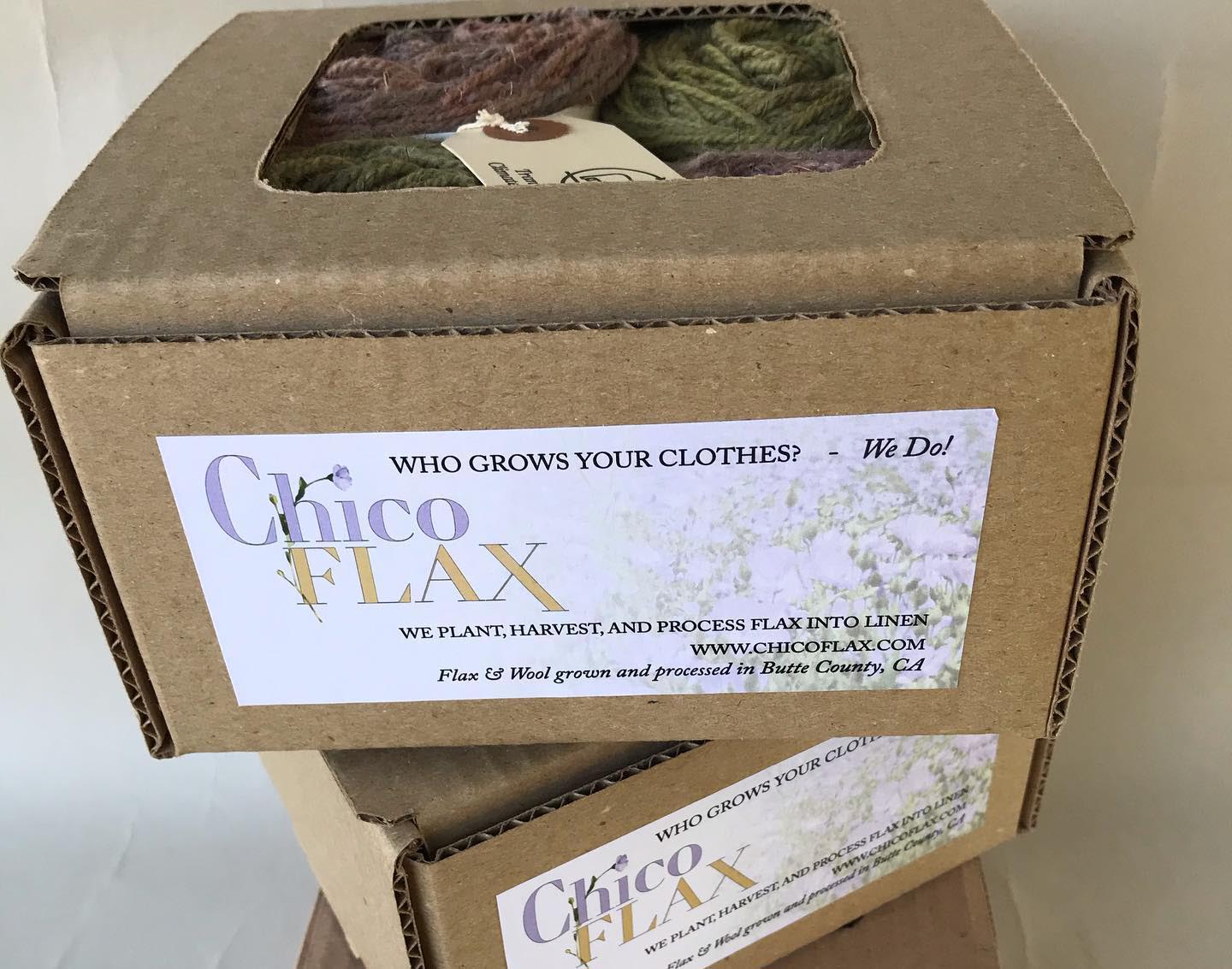
Chico Flax
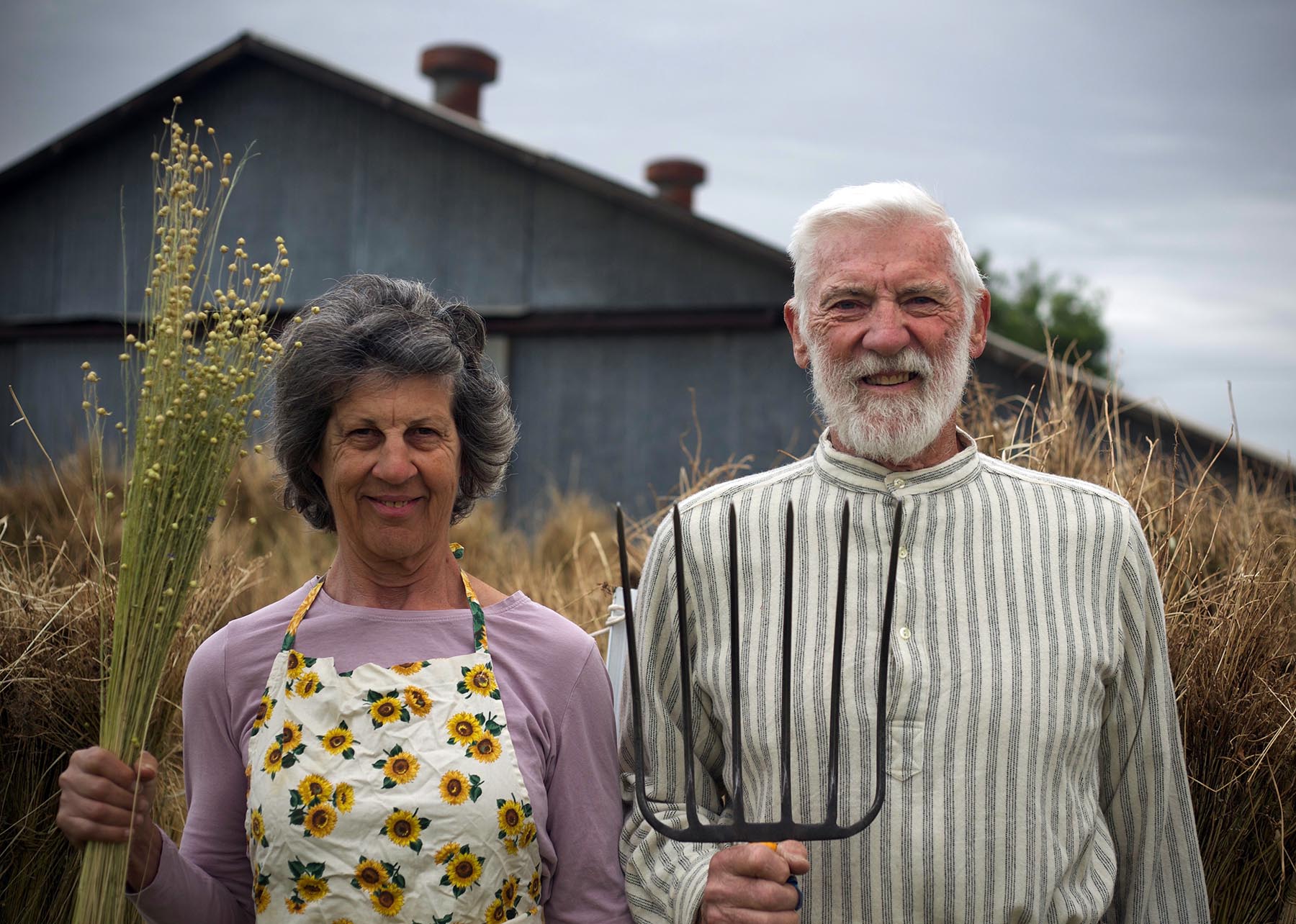
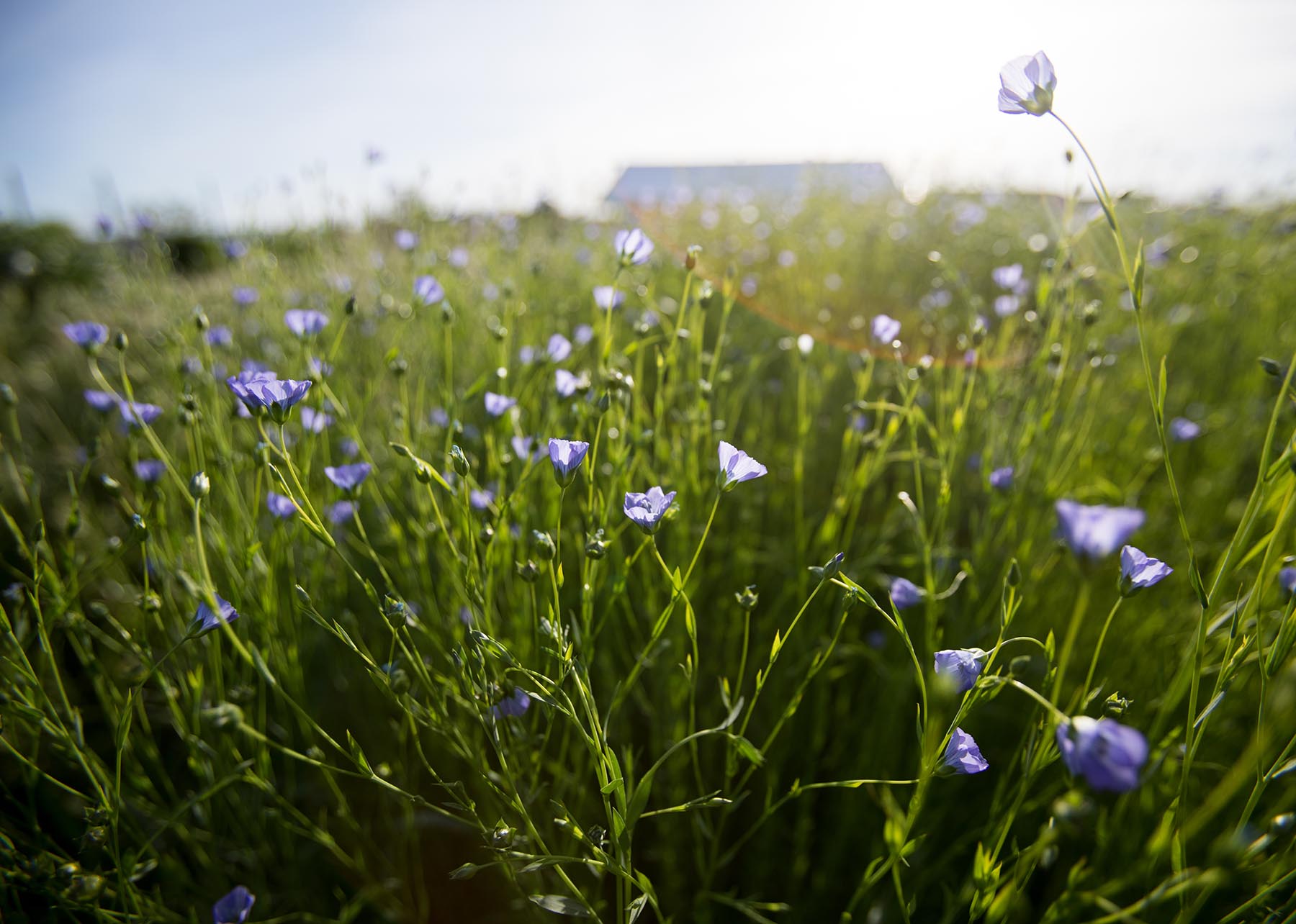
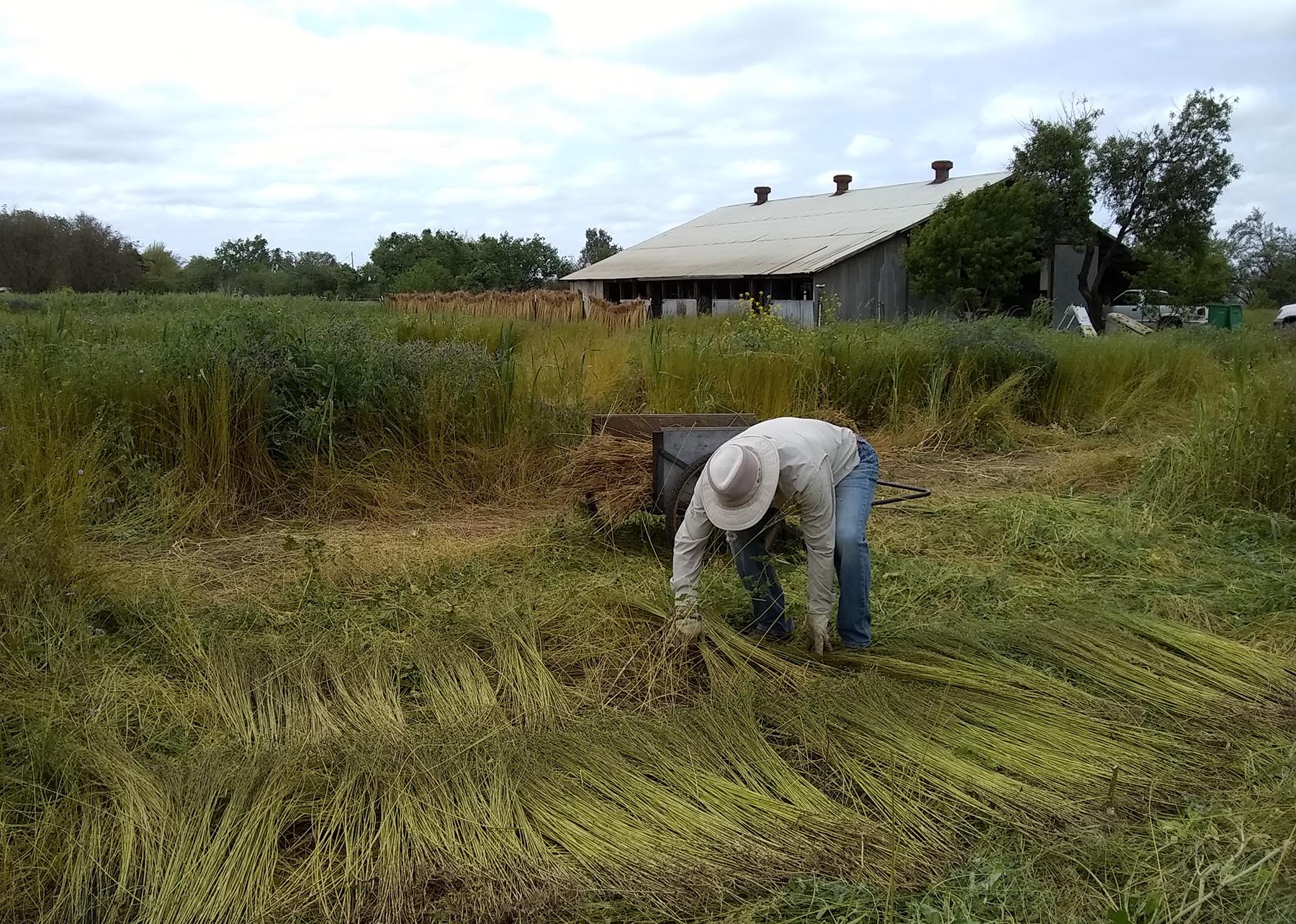
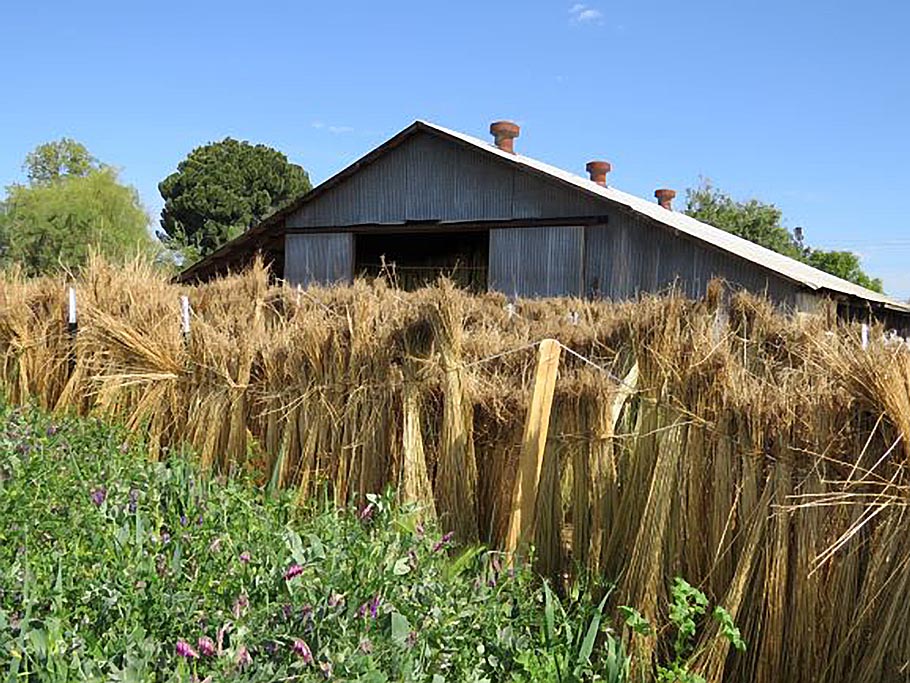
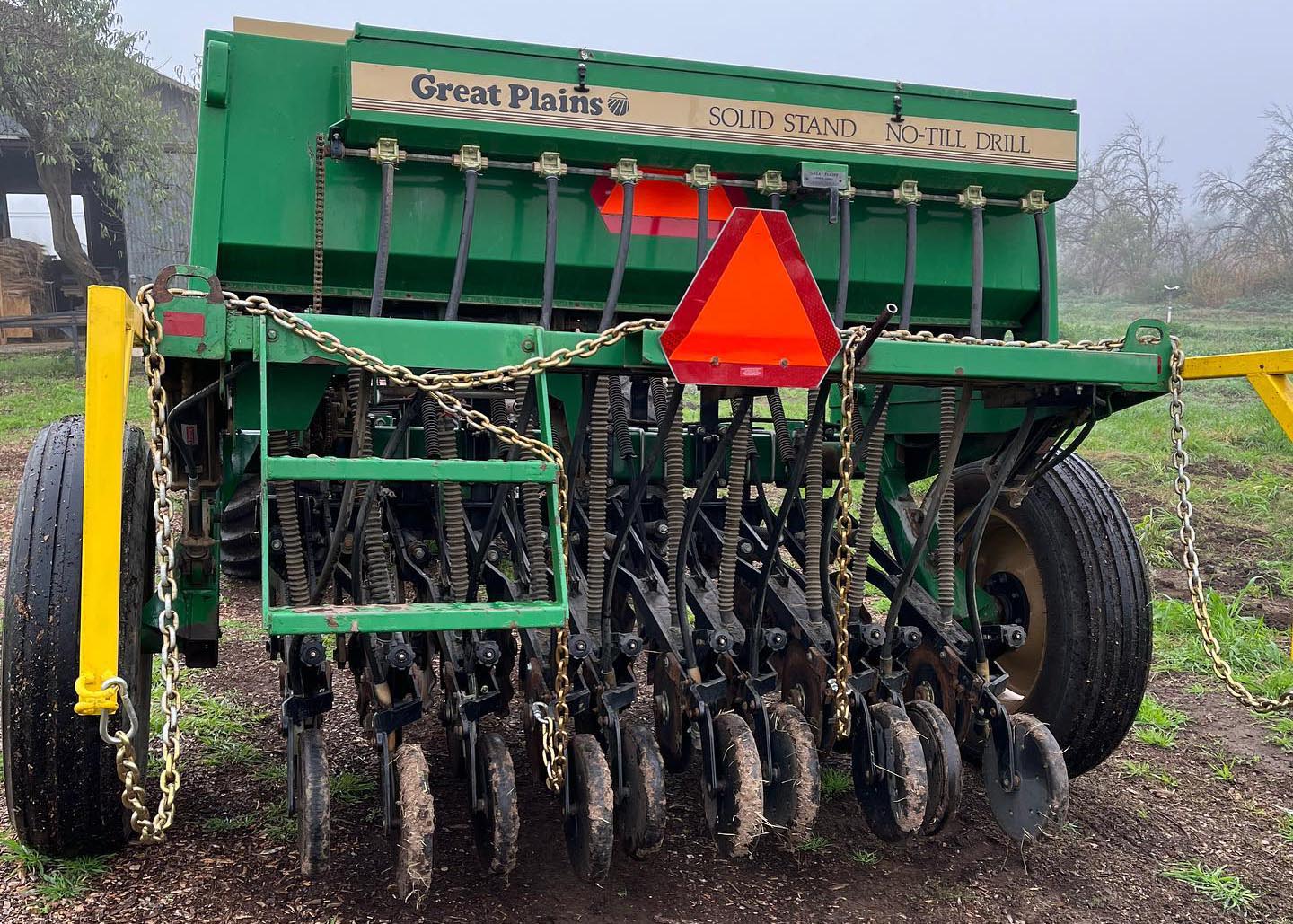
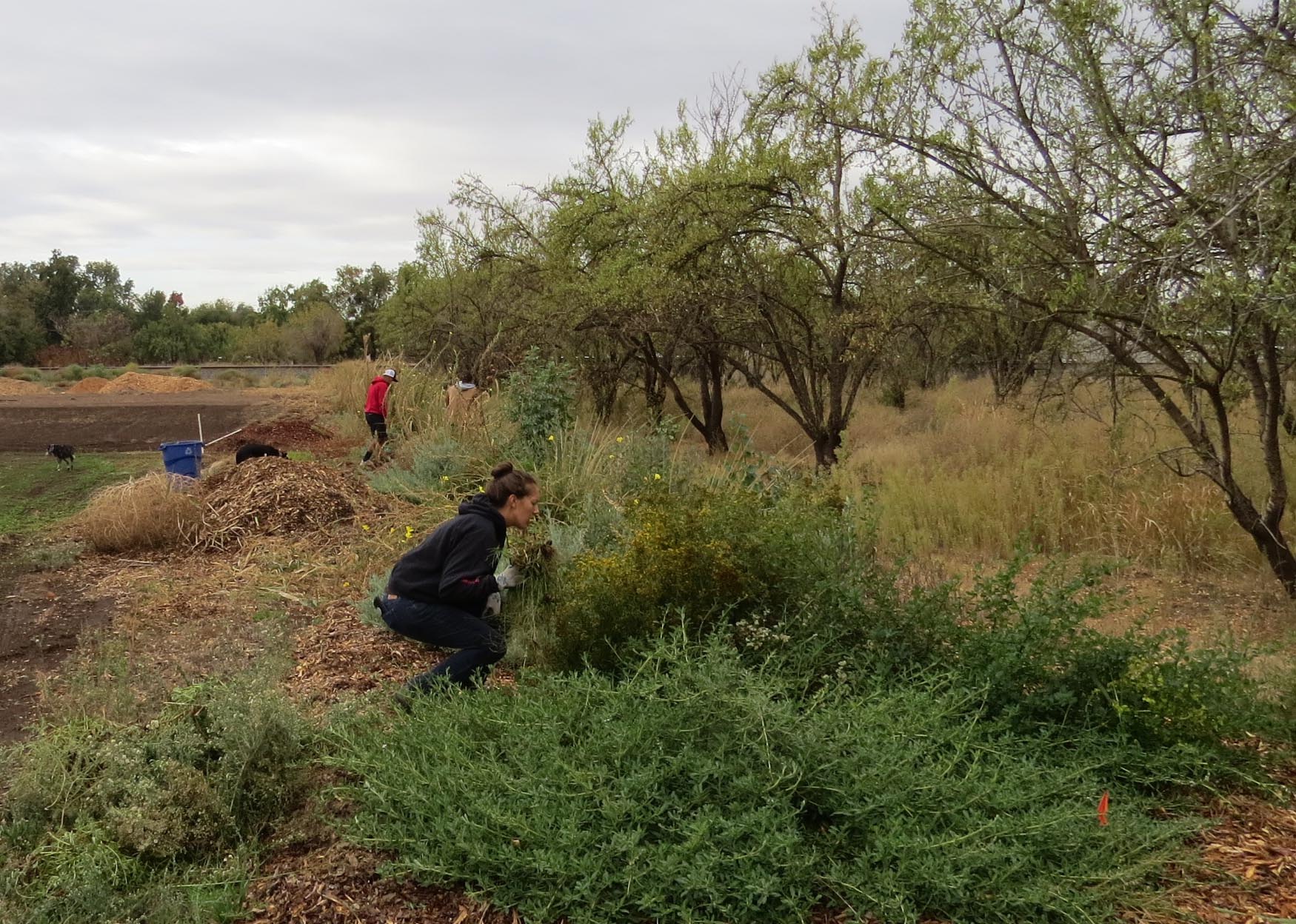
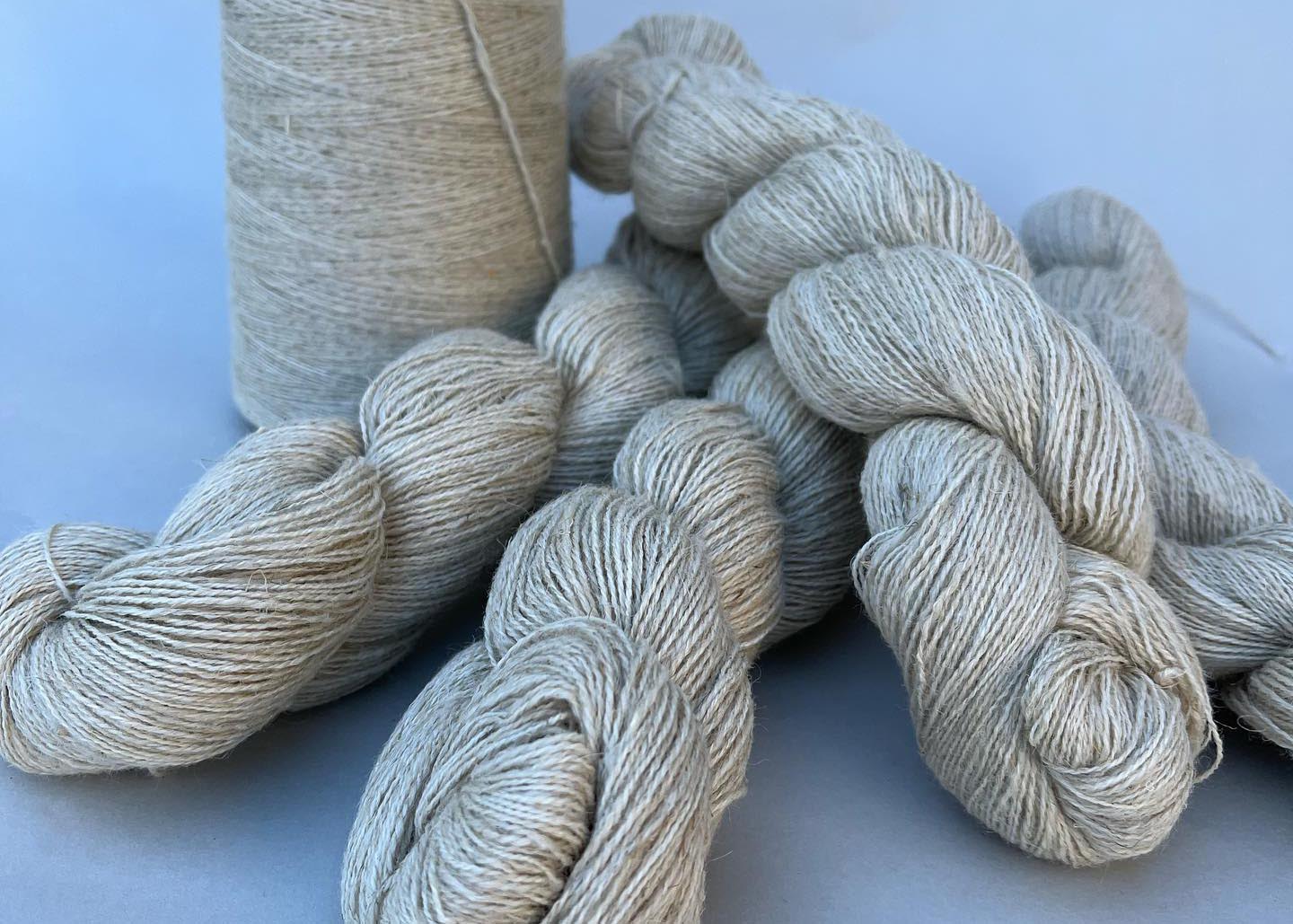
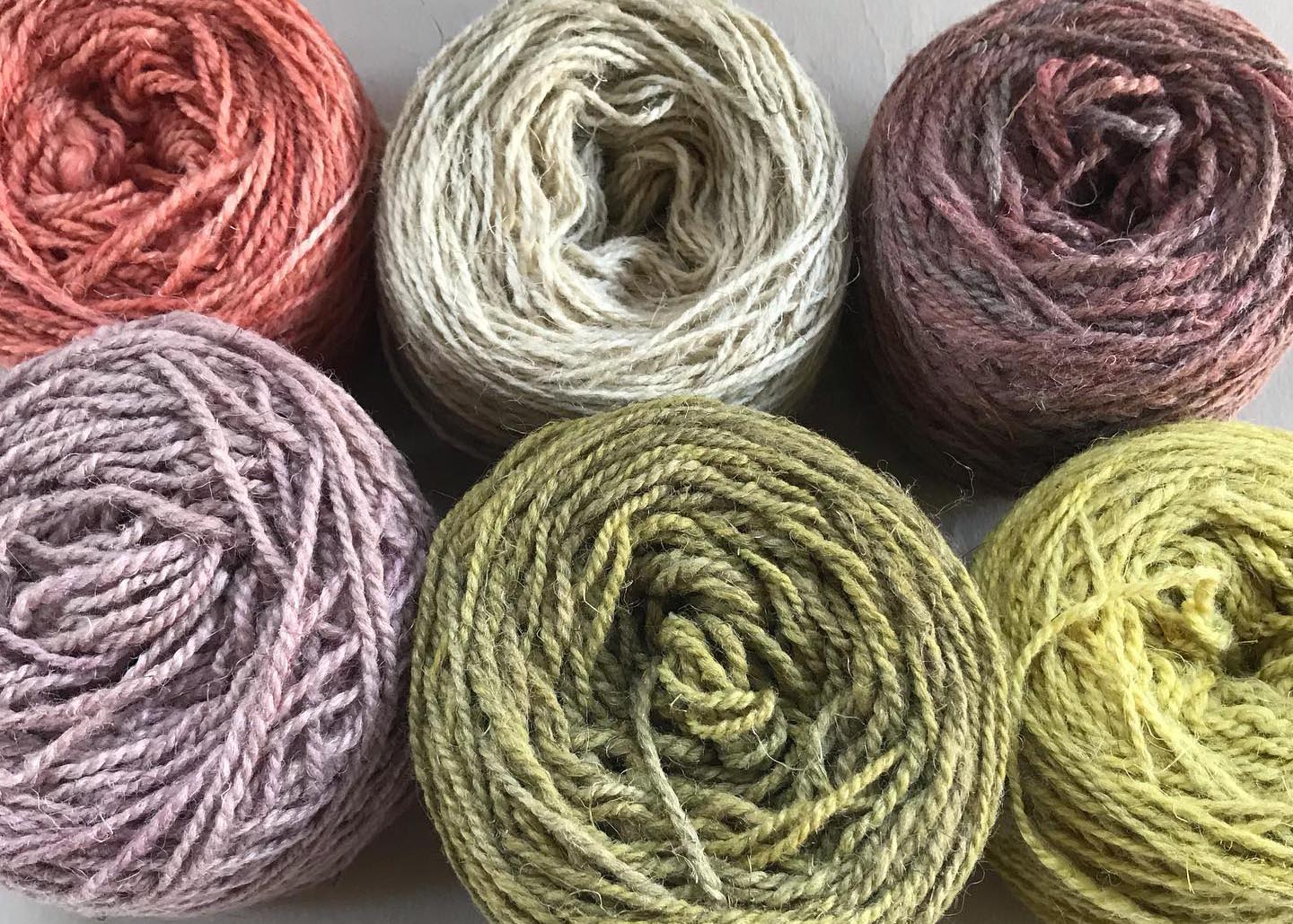
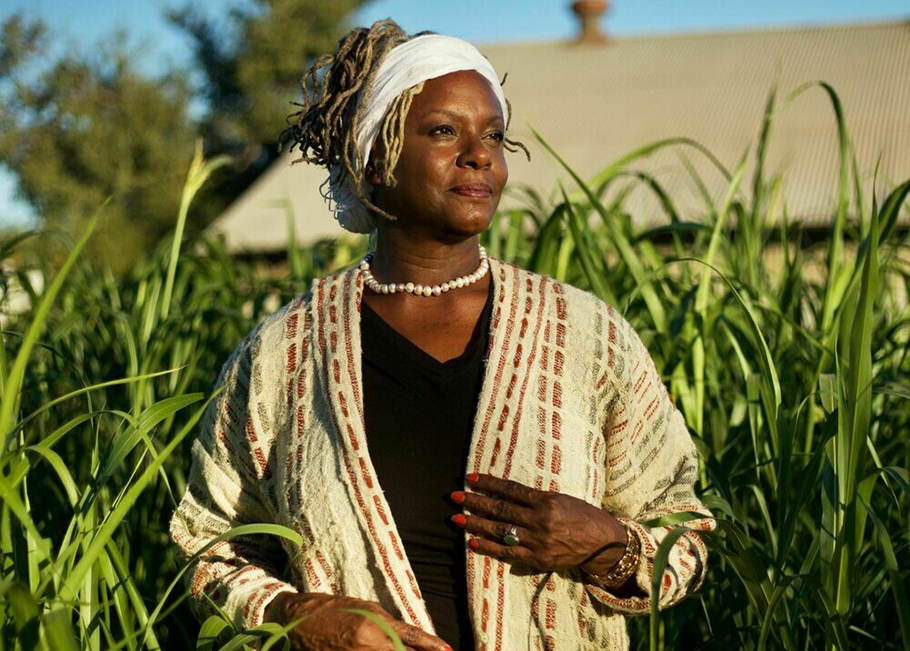
Cool, breathable, lightweight yet durable linen made from fibers derived from the stems of the flax plant is one of the oldest textiles known to humankind. A discovery in a cave in Caucasus, Georgia, indicates that prehistoric hunter-gatherers were likely making textiles from it as long as 36,000 years ago(opens in new window), and flax was specifically planted and grown for its fiber since the first ancient agricultural civilizations were established in Mesopotamia and Egypt. Fine French linen is still highly valued for housewares and designer clothing, and the market for linen has actually grown tremendously(opens in new window) in the last 2-3 years. So who would ever think that the cloth would be so difficult to make in the United States? After all, Colonial families in New England used to make their own(opens in new window) on their small family farms.
Long-time professional weaver(opens in new window) Sandy Fisher and her husband Durl Van Alstyne certainly never imagined it when they took on the project of creating a locally grown and produced “seed to shawl” line of linen yarn, cloth and other products in Chico, California. Sandy and Durl describe their journey with Chico Flax(opens in new window) as a consciousness-raising and continual growth experience from the earliest days of their venture to the present day. Doing it regeneratively has actually been the easiest part!
Sandy describes how it all began: “I’ve been a professional weaver for over 40 years, and live in Chico, where it seems like we have hot weather all the time. So I was always weaving with cotton and linen.” But she wasn’t thinking about where her yarn was coming from and how it was made. A local activist Linda Furr brought it to her attention in 2012 when a terrible factory fire(opens in new window) killed 117 people and injured 200 others in the Dhaka garment district in Bangladesh. The incident brought attention to the unsafe working conditions for those who make a lot of the clothing sold in the United States and around the world.
The impact of “fast fashion”(opens in new window) wasn’t particularly well-known at that time. And since then, the focus has expanded to include the impact on local economies in the U.S., the environment, and climate change as well as on worker health.
Sandy agreed to meet with Linda Furr to discuss how local weavers might source their materials differently. “We got together and we were, literally, in a garden where there was some decorative flax growing, and we knew that flax makes linen.” They thought that perhaps they could grow their own. “That was right up my alley! So the story started from there and it started from people in the community getting excited. We talked about making our own Chico cloth and we thought ‘wouldn’t that be cool?’ And this kept evolving. We had 40 some-odd people involved. And then we realized how hard it was to grow [in their small community gardens]. So then it became a farm with Durl and me and interns from the college. And in a nutshell, here we are! We’re making it happen on a very small scale. And we’re learning to process it. And the processing is . . .
Well, let me tell you. There are no linen mills in America. We are needing to create something new.”
No linen mills in America? How could that be?
The answer is deeply rooted in historical developments that shaped the textile industry and still impact it to this very day. Linen was the most commonly used textile in the United States until the invention of the cotton gin(opens in new window) in 1794. Processing flax and other fibers is very labor intensive to do by hand. The invention of machinery specifically used for cotton combined with slave labor in the South suddenly made cotton production very profitable. Yields doubled every ten years. So even though machinery for linen processing, spinning, and weaving was invented in the 1830s and 1840s, by then the highly sought after cotton cloth was too affordable and readily available for manufacturers to compete.
Slave labor and low-paid labor combined with the desire for an affordable product has been embedded in the textile industry, parts of the food industry, and feuds in this country from the start. How to shift the economy away from that into one that is kinder to the earth and each other is one of the key challenges of our time. Imagine starting a profitable business with these issues in mind, especially when you have very little money or farming experience to begin with.
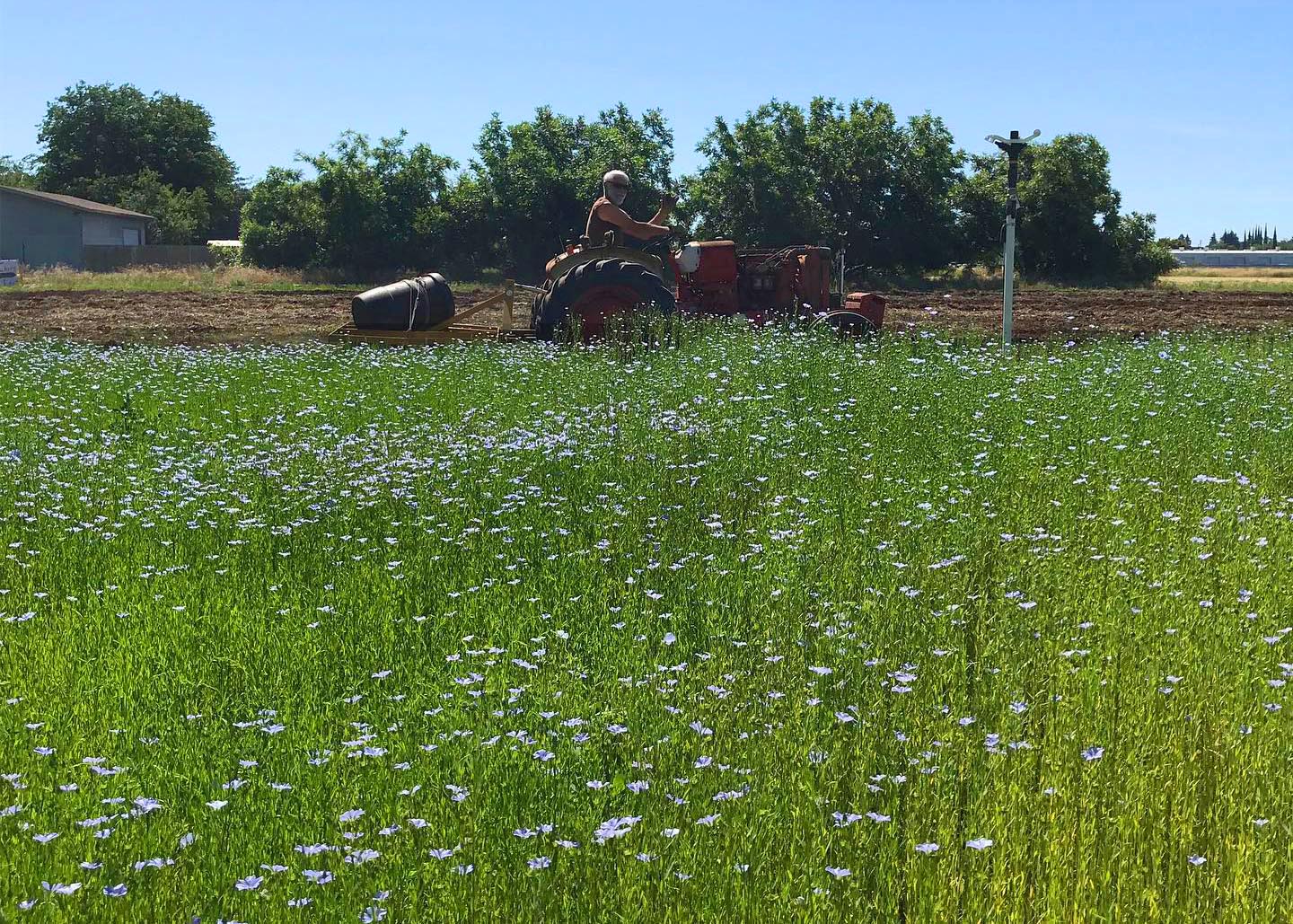
Riding the Learning Curve to Farming and Regenerative Agriculture
Durl: “We started wanting to do something that was socially responsible. So in business terms, this means putting people and the planet before profit. The three “P”s. So that was in the back of our minds.”
They started with several small plots, mostly in community gardens, with the help of several interested people who followed instructions in The Big Book of Flax(opens in new window). The book recommends planting in February, so they did and had a beautiful spring crop. They threw a harvesting party just before Memorial Day that many people attended, but the weather was hot! Durl tells the story: “So everyone said ‘Oh, we’ll just come back next weekend and harvest then.’” And in true Chico fashion, the heat quickly went up and up. “And the crop went from decent to nothing. Straw. It was good for mulch.”
Beginner Farmer Lesson Number One. Durl puts it nicely: “when the cow is ready to be milked, it’s gotta be milked! When you miss those opportunities, you’ve missed it.”
After a conversation with a professional farmer who grew Winter Wheat, they thought they would try an experiment of planting in the fall and harvesting early in the spring. They used two raised bed planter boxes of about 20 square feet each and mulched their rows with leaves. Then the weather became unusually cold for Chico with temperatures in the teens. They thought they would lose it all but instead the flax thrived. They harvested it, processed it themselves, and were happy with the results.
Beginner Farmer Lesson Number Two. You can take a small risk, break the mold, and have success. They discovered that flax can be grown as a winter crop in Chico.
 After this experience, Sandy and Durl planted a bit more and then a bit more after that with continued success. And then a good textile community friend offered them a chance to have a small farm on a site that used to be an orchard. Sandy says “She was taking that orchard out and she loved our project. She said, ‘You know what, I’ll give you a minimal rent, just enough to pay our property taxes,” and we got it! 3.75 acres. That was in 2017. It took awhile to get the old orchard out. And by then, we started to connect with the university and took workshops because of our interest in this. We connected with Lee Altier(opens in new window) and we’d give talks to his class about our vision, our dream. And then Hossein Zakeri(opens in new window). It was through those two faculty members that we were so encouraged to go forward.”
After this experience, Sandy and Durl planted a bit more and then a bit more after that with continued success. And then a good textile community friend offered them a chance to have a small farm on a site that used to be an orchard. Sandy says “She was taking that orchard out and she loved our project. She said, ‘You know what, I’ll give you a minimal rent, just enough to pay our property taxes,” and we got it! 3.75 acres. That was in 2017. It took awhile to get the old orchard out. And by then, we started to connect with the university and took workshops because of our interest in this. We connected with Lee Altier(opens in new window) and we’d give talks to his class about our vision, our dream. And then Hossein Zakeri(opens in new window). It was through those two faculty members that we were so encouraged to go forward.”
It seemed like everything was coming together. They planted a 50 x 50 foot square of flax as a test and something interesting happened. Sandy describes it: “We had striping where flax would grow at a normal height and then the next row (a big swath) was very miniscule. I checked into this and found out from our landlord that she had gone the conventional way of spraying to put pre-emergents in as orchards usually are done. So I called the county. It was a horrible chemical—I don’t even want to remember the name of it. And it was still in the ground even though they had not sprayed for two years. The county told us it would be done in 12 months.”
Durl: “I called the manufacturer for the chemical and they said, ‘Oh! There’s no sign of it after 90 days.’ But we had this striping and it was significant. By the time we checked into this, there were plants that were growing well—they were 4 inches high. In the other place—an inch!”
Lee Altier and Hossein Zakeri came out to the property to consult. The result was that Sandy and Durl decided to plant cover crops. They also did a lot of aeration of the soil which they don’t do anymore. They disced the land and then planted the entire field in flax. That, unfortunately, was too big a stretch.
Sandy: “It was way beyond our capability and machinery to harvest by ourselves at the time. We also had the Camp Fire that year so getting help was a challenge.”
“But I want to add that during that first year we were awarded a California Food and Ag grant which was great because it really put us on track to think about regenerative agriculture. The cover crop was part of the grant. Mulching was part of the grant and also a hedgerow. So I’ve actually been successful. We’ve lost some plants [because they couldn’t fully harvest it] but we have a hedgerow that’s 1600 linear feet. It’s all California natives. Also, as a natural dyer, I’m using those for color now for my fiber. It’s elderberry, coyote bush, toyons, and it’s been quite successful.” They have 14 different varieties of dye plants in the hedgerow now, a dye area in their barn, and two 20-gallon stainless steel tanks for dying up to 20 pounds of yarn at a time.
“Plus we see all this healing in the land. When we had that 50 x 50 square foot, we had no earthworms! The earthworms started come back with the cover crops. The hedgerow has brought fox and all kinds of birds and insects. And our landlord has noticed the change, too. It’s really rewarding to see the changes that we’ve made with the soil by doing simple practices.”
Other regenerative practices they use on the farm are no chemicals, no-till planting, and fungal-dominant compost. “The Covid year crop [when they used the compost was probably the most productive and strongest. The average fiber flax will grow about 36-40 inches tall. But we had one that was probably 5 foot 4 inches tall!” That was exciting but not scientifically quantified. They would like to do a side by side study to document whether the difference exists in the future.
Beginner Farmer Lesson Number Three. Help is available to you and it can make a difference!
Today’s Successes and Continued Challenges
Pandemic-related supply chain issues and labor shortages, financial limitations, and the ongoing search for mechanized processing have created multiple challenges. Yet Chico Flax has found hope in the work they’ve been doing to find potential sources of support. For example, this past year they could not plant in time because arrival of their new no-till planter was delayed by a couple of months. The year before, however, they harvested what is now 1500 pounds of dried, retted (partially processed) flax, now waiting to be milled into pure linen yarn. That was just 15% of what they planted, but they learned that this harvest was on par with Europe in terms of the amount of flax they harvest per square foot.
Durl is enthusiastic about this. “If our measurements are correct and our weights are correct, we’re in the ballpark! But we’re not doing it with this really phenomenal machinery that they use, we’re doing it with hand labor.”
What does that yield mean in terms of product?
Sandy explains that it takes a lot of flax—about a 20’ x 20’ square—to gather enough long fibers to make pure linen yarn for a single sweater. “To get a couple of shirts you’d need a couple of acres. It takes a lot to get that pure linen. But I yield a lot because I have three different venues. I have byproduct that’s sellable.” Shorter fiber lengths can be blended with wool or cotton. They’ve already found a wool mill that was able to make them yarn as a 65% wool, 35% flax blend. Plus the short pieces make a good filler for a local dealer making organic hypoallergenic mattresses. Finally, the straw is valuable as mulch and is also well-liked by papermakers. Most importantly, the yarn they’ve made turned out to be quite popular with local knitters.
Durl chimes in: “We have built about 60 pounds of yarn. But we don’t have that much for sale now because we’ve sold it!”
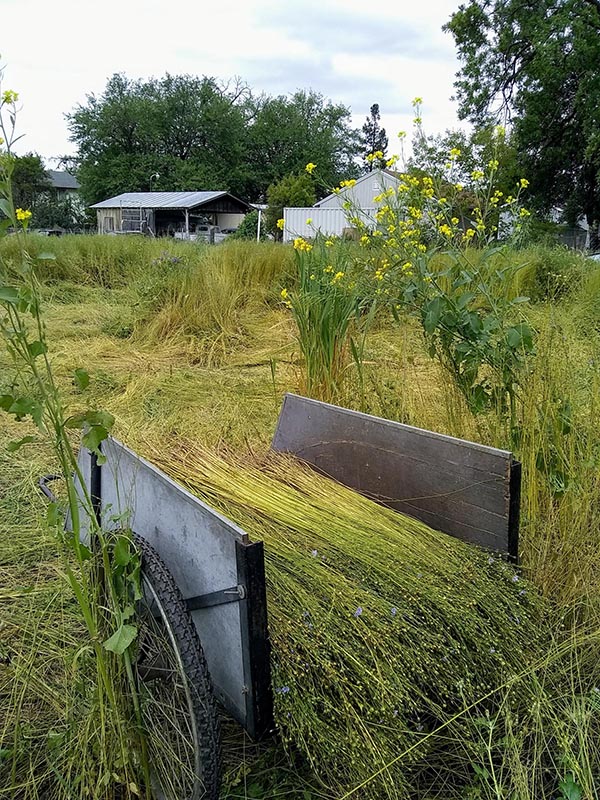 The Search for a Mill
The Search for a Mill
The biggest challenge flax growers in the United States all face is lack of a linen mill. Unlike wool, pure linen yarn needs to be created through a wet process that is not done in wool mills. Linen mills do exist in other countries—primarily China, India, Belgium, France, and some eastern European countries. But most of them deal in excessively large quantities that would take an enormous investment. Durl says, “If we had half a million tons we probably could ship it to China, they would process it into garments, and sell it back.”
Sandy: “But that then defeats the purpose of what we’re trying to do!”
Durl: “We would like to have people employed here. We would like to be contributing to the local economy. We would like to have a product that could be identified as proudly coming from Butte County or Northern California.”
Still, if they could find a mill anywhere willing to work with small quantities it would help. They are capable of processing and spinning their own yarn by hand, and they recently did just that in order to participate in the Smithsonian Craft Show(opens in new window) in Washington, D.C. But that leads to a product that is quite high-end. Those customers exist but what’s really needed is the ability to create something more affordable.
The same issue has been faced by those trying to create a hemp fabric industry so there are many people working on this problem. Chico Flax has been in contact with a research cotton mill at the University of North Carolina in Raleigh, another elsewhere in North Carolina, and one in New Mexico that might be able to figure something out. And they already found a small linen mill in France willing to take as little as 100 pounds of their long line linen. The pandemic and the problem of products being stuck in port interrupted that for now but the idea is still in play. Plus there is a company in Nova Scotia trying to design long line flax fiber processing equipment for small scale use. Ideally, Chico Flax wants to have a mill available locally that would cut down on transportation costs (and associated climate impacts) and to provide jobs for the local economy. This is definitely a work in progress and many growers are on a similar path.
Advice to Others and Future Plans
Durl’s advice for people thinking about regenerative plant fiber is “Be younger! Have more money.” Sandy adds, “Yeah, I wish this had happened about 20 years ago. But also, be realistic. There are several people in this country that are thinking about it. And when I listen to them and hear what they’re thinking, it’s not practical.” Both of them share stories about fellow adventurers who wanted to jump into this without a gameplan for how to process the fiber, make products, and market them. There hasn’t been a ready-made way to do the entire undertaking from seed to shawl in the United States for about 200 years. To make it happen there needs to be long-term commitment to solve the problems, find funding, etc.
But that’s what Chico Flax is still doing.
Because they have previously worked with the Engineering Department at Chico State with students who designed and built an innovative tool used in one step of flax processing as a capstone project, Durl and Sandy are thinking about how to create more student learning experiences that could help their business.
Durl: “What we would like to see in the next couple of years, is that we have the appropriate machinery to no-till plant and roll the cover crop simultaneously. Also, to be able to hire enough people that are talented and interested enough to harvest efficiently and go through the processing that we have developed for the earlier stuff. Plus somebody who could help after we’ve had the yarns made by helping to sell them and market them!”
Having a large quantity of flax to process would justify having a regional mill so Sandy and Durl are also looking into how to encourage that to happen. Durl says, “We’re looking at a SARE(opens in new window) grant so we could show that this plant could be grown in other regions of California, maybe southern Oregon, but mostly the Central Valley.”
Sandy: “I would love to see the fruition of actually getting a linen mill in America. Here’s the ideal version: I think there should be a west coast one, and an east coast one, and somewhere in the middle a spinning mill—because it takes a lot of processing mills to feed that spinning mill. I think the next step is going to the state level. Can we actually appeal to big investors? Can this become profitable at scale? That’s my dream.”
Sandy says she’s not sure she’ll see this in her lifetime. “But I’d like to at least be able to say that I made some contribution to that and to get really good quality linen going here.”
Chico Flax is part of the nonprofit Fibershed network if you’d like to support their work. Investors and philanthropists interested in working on this project should contact Chico Flax(opens in new window) to find out how.
